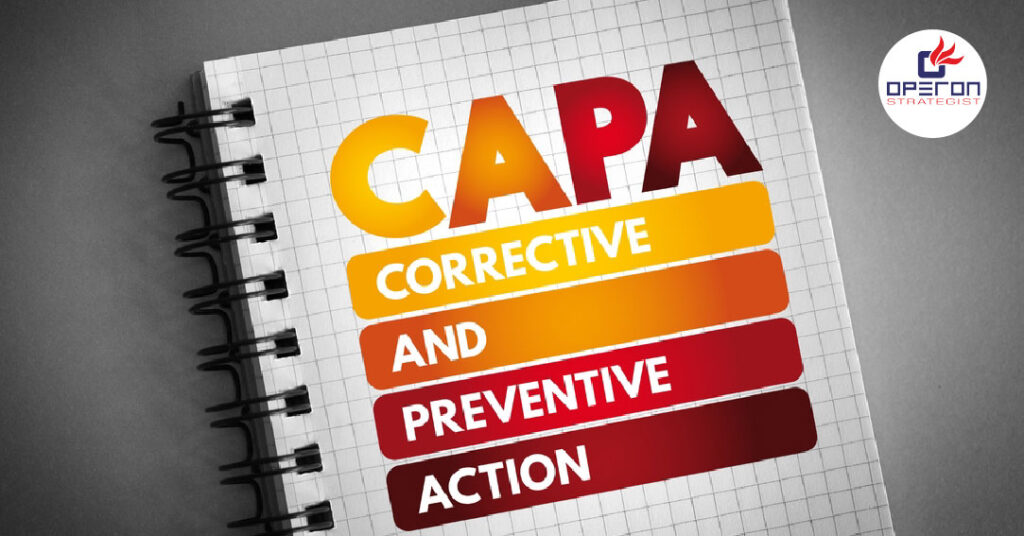In quality management, addressing defects, nonconformities, and risks is crucial for ensuring compliance and maintaining efficiency. Organizations often implement Correction, Corrective Action, and Preventive Action (CAPA) to improve processes and prevent recurring issues. However, these terms are often confused. Understanding their distinctions, along with real-world examples and best practices, helps ensure effective implementation.
Clarifying the Key Terms
Correction:
A correction is an immediate fix for a detected problem. It does not address the root cause but rather rectifies the issue to maintain workflow continuity.
Looking For a Medical Device Regulatory Consultant?
Let’s have a word about your next project
Example: If a medical device batch fails a quality test, segregating and reworking the defective products is a correction. The root cause is not yet identified or eliminated.
Key Aspects:
- Temporary solution
- Quick action to restore conformity
- Does not eliminate the cause of the problem
Corrective Action:
A corrective action is a systematic approach to eliminate the root cause of a detected nonconformity. It prevents recurrence by addressing underlying issues.
Example: If a recurring calibration issue is found in a medical device manufacturing unit, analyzing data, identifying faulty equipment, and retraining staff to improve calibration procedures are corrective actions.
Key Aspects:
- Root cause identification
- Permanent resolution
- Prevents recurrence
- Implemented through structured problem-solving methods like 5 Whys or Fishbone Analysis
Preventive Action:
Preventive action is taken to eliminate potential causes of nonconformities before they occur. It is a proactive measure that mitigates risks and enhances process reliability.
Example: If a company identifies a potential supply chain disruption risk, implementing an alternative supplier strategy before an issue arises is a preventive action.
Key Aspects:
- Proactive approach
- Prevents occurrence of nonconformity
- Risk-based thinking
- Often implemented using Failure Mode and Effects Analysis (FMEA) or risk assessment methodologies
Key Differences Between Correction, Corrective Action, and Preventive Action
Aspect | Correction | Corrective Action | Preventive Action |
Focus | Immediate issue | Root cause of existing nonconformity | Potential nonconformity |
Nature | Reactive | Reactive | Proactive |
Impact | Temporary fix | Permanent solution | Long-term risk prevention |
Example | Reworking a defective product | Analyzing and eliminating cause of defects | Implementing a new supplier to mitigate risk |
How Can Operon Strategist Help?
Operon Strategist, we specialize in providing all regulatory approvals for medical devices and IVDs including turnkey solution provider. Our team helps to implement effective CAPA strategies, ensuring compliance with global regulations like ISO 13485, ENISO 13485 FDA 21 CFR Part 820, SFDA, UKCA, EU MDR. and all country specific regulatory approvals. We also support root cause analysis, risk assessment, or regulatory documentation and our experts can guide you through the process seamlessly. Contact us today to streamline your quality management system and enhance operational efficiency.
Ensure CAPA Compliance With Expert Support.
FAQs
Correction fixes the immediate issue; corrective action removes the root cause and preventive action stops the issue before it happens.
Correction is a quick fix, but the problem will return without corrective action, causing more waste and compliance risks.
Identify risks using FMEA, train teams to spot issues early and implement proactive solutions.
Use tools like 5 Whys or Fishbone Diagram to find the root cause, implement changes, and track results.
- adminhttps://operonstrategist.com/author/admin-2/
- adminhttps://operonstrategist.com/author/admin-2/
- adminhttps://operonstrategist.com/author/admin-2/
- adminhttps://operonstrategist.com/author/admin-2/




